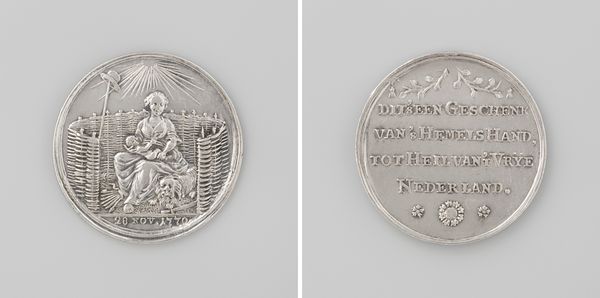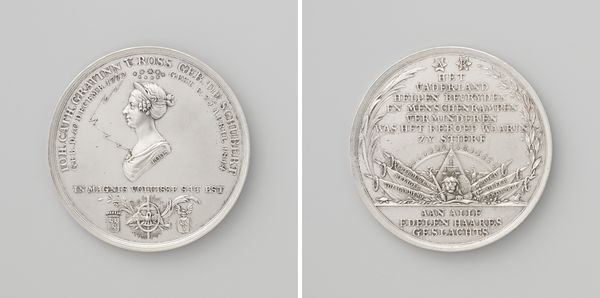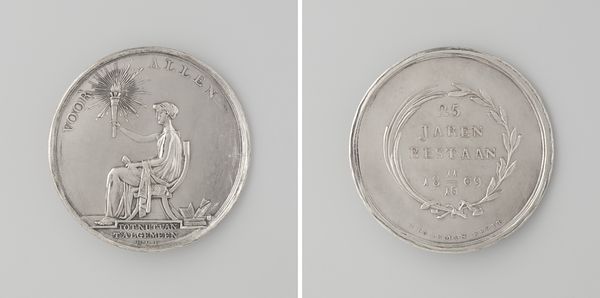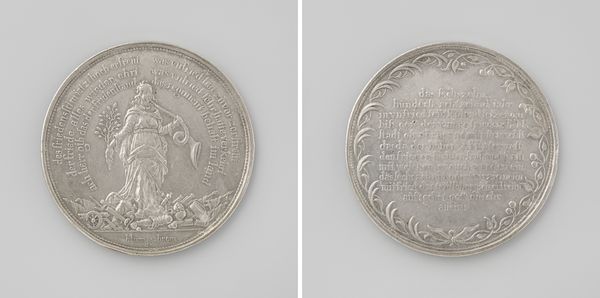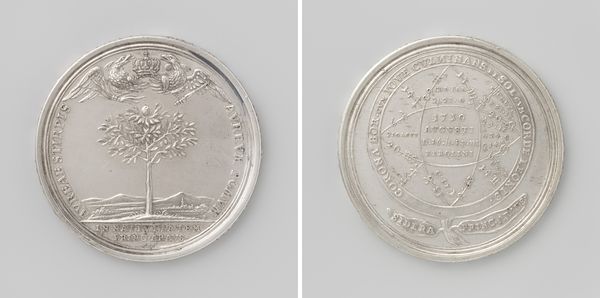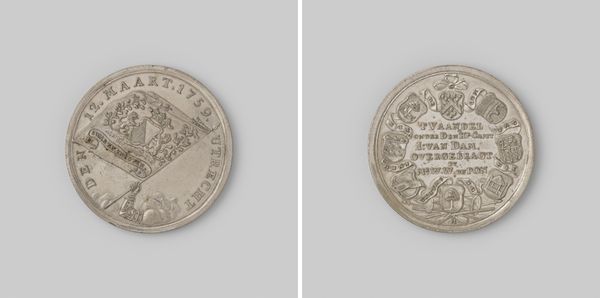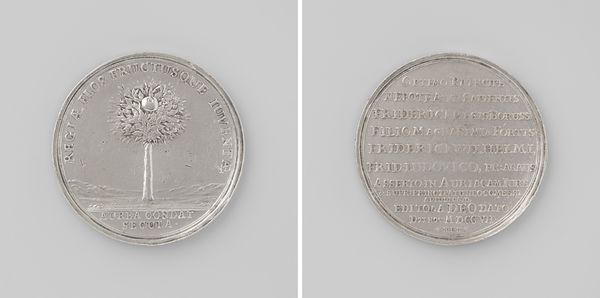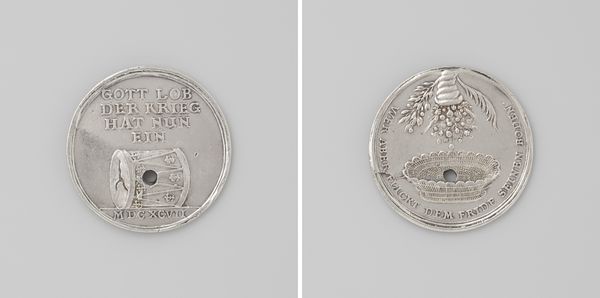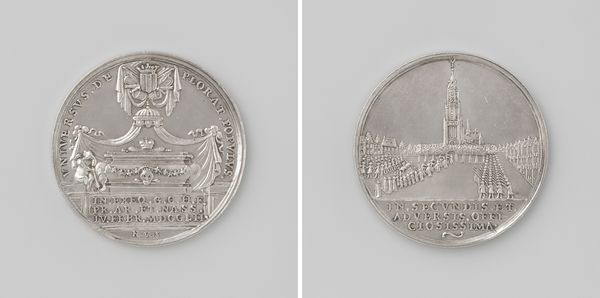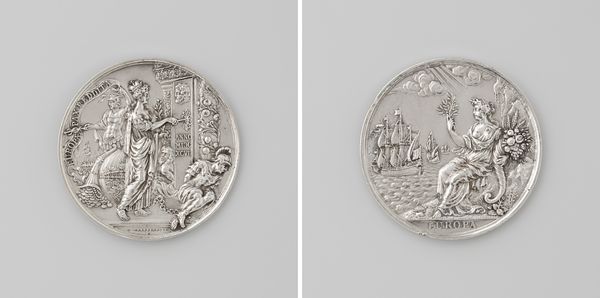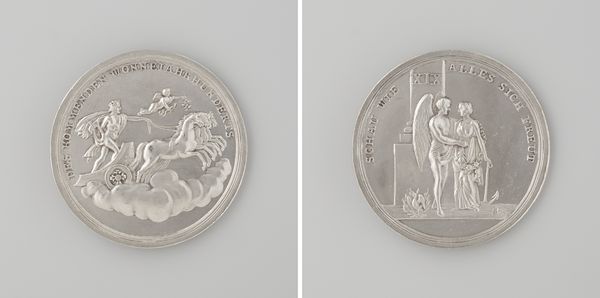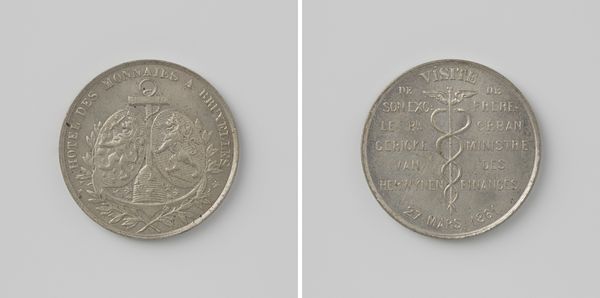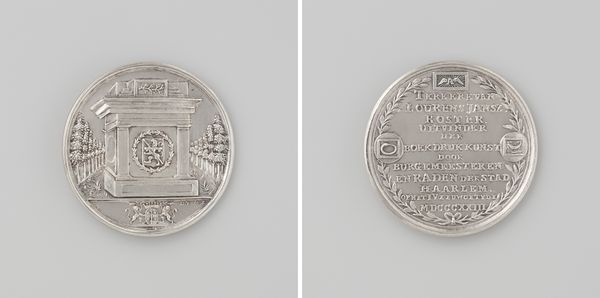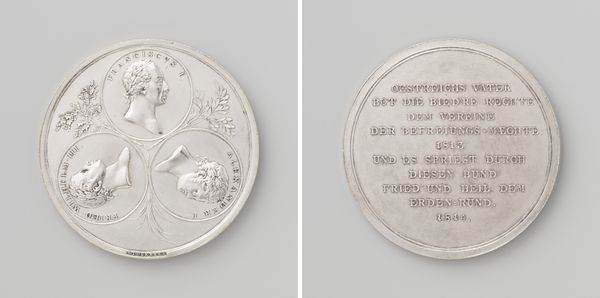
Vereniging van Nederland en België onder Willem I Frederik, koning der Nederlanden 1815
metal, relief, sculpture, engraving
portrait
neoclacissism
metal
relief
sculpture
history-painting
engraving
Dimensions: diameter 4.7 cm, weight 35.86 gr
Copyright: Rijks Museum: Open Domain
Editor: This is a metal relief by Charles François Trebuchet, created in 1815. It commemorates the union of the Netherlands and Belgium under King William I. The engraving has such an air of solemn authority about it. What does this work suggest to you, from a historical point of view? Curator: This piece speaks volumes about the creation and propagation of national identity. Medals like these were deliberately designed and widely distributed to shape public perception. It visually constructs Willem I as the unifying figure, legitimizing his rule after the Napoleonic era. Editor: I see. It's almost like a carefully orchestrated PR campaign... the profile on one side, and then the crowned lion, seemingly holding a sword and shield, on the other. What are those symbols doing? Curator: Exactly. The lion is a traditional symbol of Dutch power. Its militant presentation reinforces this image, while the crown emphasizes the king's sovereignty. It's an image designed for consumption. How do you think the public at the time might have responded to this idealized depiction? Editor: Maybe they'd feel pride? Or maybe skepticism, especially those who might have resisted being unified under one ruler. I hadn’t thought about it as propaganda before, more as just... historical artifact. Curator: That tension is precisely what makes it so compelling. It shows the ambition to forge a unified national sentiment, but also implicitly acknowledges the potential for dissent. The very existence of such commemorative art hints at underlying challenges to the new order. Editor: This really highlights the power of art to be more than just aesthetically pleasing; it's actively shaping social narratives and political power structures. Curator: Precisely. Analyzing art as historical discourse reveals the subtle, and sometimes not-so-subtle, ways in which societies attempt to define themselves.
Comments
No comments
Be the first to comment and join the conversation on the ultimate creative platform.
